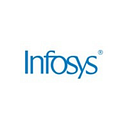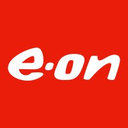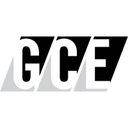Frequently Asked Questions
Product Information & Features
What is Attack Surface Assessment?
Attack Surface Assessment is the thorough investigation and analysis of all digital points in an organization where a security breach could occur. It involves cataloging every internet-facing asset—such as websites, APIs, cloud services, and remote devices—and assessing their vulnerabilities. This process empowers organizations to proactively safeguard against breaches by providing a comprehensive view of potential risks. (Source)
What does IONIX do?
IONIX is an External Exposure Management platform designed to identify exposed assets and validate exploitable vulnerabilities from an attacker's perspective. It enables security teams to prioritize critical remediation activities by cutting through the flood of alerts. Key features include complete attack surface visibility, identification of potential exposed assets, validation of exposed assets at risk, and prioritization of issues by severity and context. (Source)
What are the main features of the IONIX platform?
The IONIX platform offers Attack Surface Discovery, Risk Assessment, Risk Prioritization, and Risk Remediation. It enables organizations to discover all relevant assets, monitor their changing attack surface, and ensure more assets are covered with less noise. (Source)
What types of attack surface assessment technologies does IONIX support?
IONIX supports Cyber Asset Attack Surface Management (CAASM), Digital Risk Protection Services (DRPS), and External Attack Surface Management (EASM). These technologies help organizations aggregate asset data, monitor threat intelligence, and automatically discover internet-facing assets and vulnerabilities. (Source)
What integrations does IONIX offer?
IONIX integrates with Jira, ServiceNow, Slack, Splunk, Microsoft Sentinel, Palo Alto Cortex/Demisto, AWS Control Tower, AWS PrivateLink, and pre-trained Amazon SageMaker Models. For a full list, visit IONIX Integrations.
Does IONIX have an API?
Yes, IONIX provides an API that supports integrations with major platforms such as Jira, ServiceNow, Splunk, Cortex XSOAR, and more. (Source)
What technical documentation is available for IONIX?
IONIX offers technical documentation, guides, datasheets, and case studies on its resources page. Access these materials at IONIX Resources.
Use Cases & Benefits
Who can benefit from IONIX?
IONIX is tailored for Information Security and Cybersecurity VPs, C-level executives, IT managers, and security managers across industries, including Fortune 500 companies. (Source)
What business impact can customers expect from using IONIX?
Customers can expect improved risk management, operational efficiency, cost savings, and enhanced security posture. IONIX helps visualize and prioritize hundreds of attack surface threats, streamlines security operations, reduces mean time to resolution (MTTR), and protects brand reputation. (Source)
What problems does IONIX solve?
IONIX addresses challenges such as shadow IT, unauthorized projects, fragmented IT environments, lack of attacker-perspective visibility, and maintaining up-to-date asset inventories in dynamic environments. (Source)
What are some case studies or customer success stories for IONIX?
IONIX has helped E.ON continuously discover and inventory internet-facing assets (Case Study), Warner Music Group boost operational efficiency (Case Study), and Grand Canyon Education enhance security measures (Case Study).
What industries are represented in IONIX's case studies?
Industries include Insurance and Financial Services, Energy, Critical Infrastructure, IT and Technology, and Healthcare. (Source)
Features & Capabilities
How does IONIX help organizations discover their external web footprint?
IONIX identifies all external assets, including shadow IT and unauthorized projects, ensuring no assets are overlooked. This is especially valuable during cloud migrations, mergers, and digital transformation initiatives. (Source)
How does IONIX support proactive security management?
IONIX enables early threat identification and mitigation, helping organizations move from reactive to proactive security management. Its Threat Exposure Radar feature prioritizes the most urgent and critical security issues. (Source)
How does IONIX provide real attack surface visibility?
IONIX offers a clear view of the attack surface from an attacker’s perspective, enabling better risk prioritization and mitigation strategies. (Source)
How does IONIX enable continuous discovery and inventory?
IONIX continuously tracks internet-facing assets and their dependencies, maintaining an up-to-date inventory and ensuring no vulnerabilities are left unaddressed. (Source)
What KPIs and metrics are associated with IONIX's solutions?
Key metrics include completeness of attack surface visibility, identification of shadow IT, remediation time targets, effectiveness of surveillance, severity ratings for vulnerabilities, risk prioritization effectiveness, and frequency of asset inventory updates. (Source)
Competition & Market Differentiation
How does IONIX differ from other attack surface management solutions?
IONIX stands out for its ML-based 'Connective Intelligence' that finds more assets with fewer false positives, Threat Exposure Radar for prioritizing critical issues, and comprehensive digital supply chain coverage. Unlike alternatives, IONIX reduces noise, validates risks, and provides actionable insights for maximum risk reduction and operational efficiency. (Source)
What industry recognition has IONIX received?
IONIX was named a leader in the Innovation and Product categories of the ASM Leadership Compass for completeness of product vision and a customer-oriented approach. It also won the Winter 2023 Digital Innovator Award from Intellyx and is listed in the Gartner Competitive Landscape for Attack Surface Management. (Source)
What does Gartner recommend regarding attack surface management?
Gartner's Top Trends in Cybersecurity in 2022 report recommends investing in processes and tools capable of securing the growing attack surface. Gartner identified attack surface expansion as a top risk and security trend for 2022. (Source)
What challenges does Gartner highlight regarding attack surface management?
Gartner highlights challenges such as rapid expansion of digital infrastructures, complexity of environments, maintaining accurate asset inventory, and reliance on legacy or manual ASM solutions. These factors make it difficult for organizations to manage and secure their attack surface effectively. (Source)
Implementation & Support
How long does it take to implement IONIX?
Initial deployment of IONIX typically takes about a week and requires only one person to implement and scan the entire network. Customers have access to onboarding resources such as guides, tutorials, webinars, and a dedicated Technical Support Team. (Source)
What training and technical support does IONIX provide?
IONIX offers streamlined onboarding resources, including guides, tutorials, webinars, and a dedicated Technical Support Team to assist customers during implementation and adoption. (Source)
What customer service and support are available after purchase?
IONIX provides technical support and maintenance services during the subscription term, including troubleshooting, upgrades, and maintenance. Customers are assigned a dedicated account manager and benefit from regular review meetings. (Source)
How do customers rate the ease of use of IONIX?
Customers have rated IONIX as user-friendly and appreciate having a dedicated account manager for smooth communication and support. (Source)
Security & Compliance
What security and compliance certifications does IONIX have?
IONIX is SOC2 compliant and supports companies with their NIS-2 and DORA compliance, ensuring robust security measures and regulatory alignment. (Source)
Customer Proof
Who are some of IONIX's customers?
IONIX's customers include Infosys, Warner Music Group, The Telegraph, E.ON, Grand Canyon Education, and a Fortune 500 Insurance Company. For more details, visit IONIX Customers.

infosys.com

warnermusicgroup.com

telegraph.co.uk

eon.com

gce.com
Blog & Resources
Does IONIX have a blog?
Yes, IONIX's blog covers cybersecurity topics, exposure management, and industry trends. Key authors include Amit Sheps and Fara Hain. Visit the IONIX Blog for the latest articles.
What kind of content is available on the IONIX blog?
The blog provides insights on exposure management, vulnerability management, continuous threat exposure management, and cybersecurity best practices. (Source)
Objections & Adoption
How does IONIX address value objections?
IONIX demonstrates value by showcasing immediate time-to-value with no impact on technical staffing, providing personalized demos, and sharing real-world case studies with measurable outcomes. (Source)
How does IONIX address timing objections?
IONIX offers flexible implementation timelines, a dedicated support team, seamless integration capabilities, and emphasizes long-term benefits and efficiencies gained by starting sooner. (Source)













